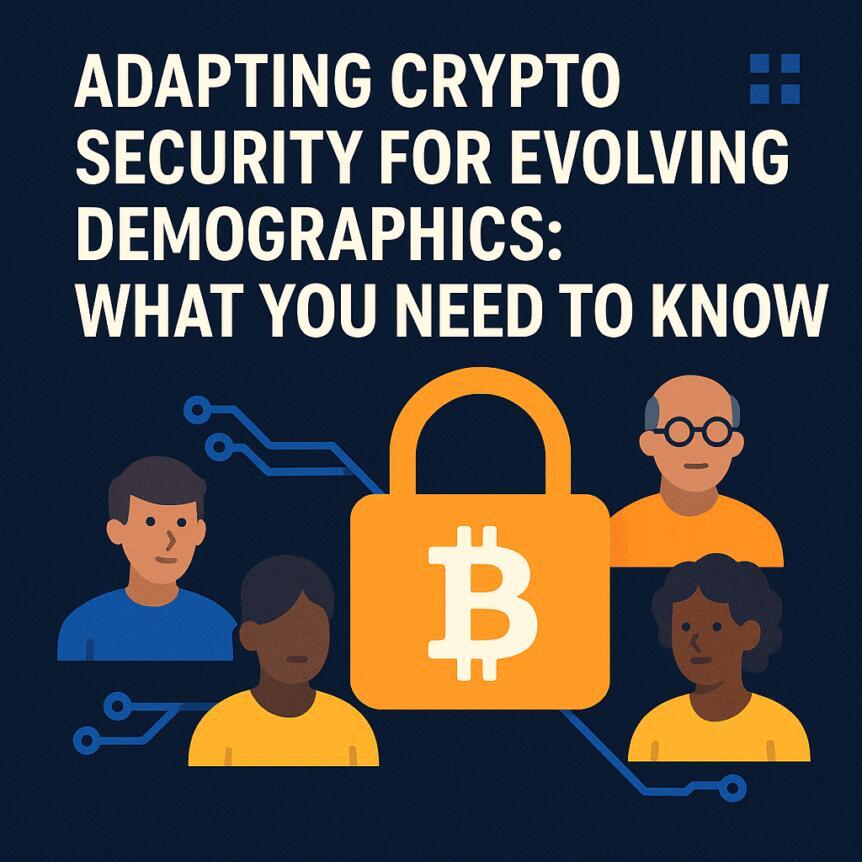
Adapting Crypto Security For Evolving Demographics: What You Need To Know
- Stablecoins account for approximately 40% of crypto volume in Q3 2025, driven by real-world utility needs. Emerging markets like Southeast Asia, Africa, and Latin America are leading crypto adoption, mainly through stablecoins for remittances and small transactions. Most new users prioritize practicality, often relying on custodial wallets, which introduces new security challenges. Innovations in crypto security and user experience aim to make onboarding seamless, with integrated safeguards and recovery options. The future of crypto hinges on building accessible, secure platforms that serve practical financial needs beyond ideological debates.
Once regarded as the domain of tech-savvy early adopters and crypto maximalists, the demographic landscape of cryptocurrency users is changing swiftly. Today, the majority of active crypto participants are motivated by tangible, everyday financial needs. Stablecoins such as Tether's USDt and Circle 's USDC now constitute nearly 40% of the total crypto trading volume as of Q3 2025, reflecting their crucial role in facilitating practical financial activities. This trend is especially prominent in regions like Southeast Asia, Africa, and Latin America, where banking systems may be slow, costly, or unreliable.
Particularly in countries like the Philippines, stablecoins are vital for low-cost, rapid cross-border remittances. Data shows that many uses are driven by necessity: small transactions under $250, often used for groceries, bills, or tuition. Countries such as Nigeria, Vietnam, and the Philippines are experiencing a surge in crypto engagement, fueled by the need for a practical financial tool rather than ideological motivations.
Security and accessibility for new usersHowever, expanding crypto adoption introduces security challenges. New users often prioritize utility-sending or receiving funds-over understanding complex security protocols like seed phrases or private keys. Many rely on exchange wallets or custodial services, which, although more straightforward, risk compromising the foundational crypto principle:“not your keys, not your coins.”
This reliance on custodial solutions underscores the need for integrated, seamless security features. Companies are innovating with mechanisms such as abstracted account recovery, multi-layered safeguards, and hardware integrations to protect assets without burdening users with cryptographic complexity. Security must become a transparent part of the user experience rather than an obstacle to entry.
The path forward: seamless, secure, and user-centricThis new wave of crypto users isn't waiting for perfect interfaces; they are already using stablecoins for real-world transactions-sending money, making purchases, or paying bills-often without realizing the blockchain infrastructure underlying these actions. To sustain this growth, the industry must shift toward making crypto products more accessible and secure, integrating features like custodial wallets, social recovery, and insured custody options.
Major enterprises involved in remittances and mobile payments are increasingly adopting blockchain rails to enhance speed and reduce costs, all while hiding the underlying complexity from users. The goal is to embed security and ease of use into crypto platforms, making them as familiar and frictionless as messaging apps.
Ultimately, the future of cryptocurrency depends on broadening accessibility and trust. The industry must design solutions that embrace utility and practicality-empowering a global population that values ease, safety, and real-world financial empowerment over ideological debates. As stablecoins dominate and adoption accelerates, delivering an intuitive and secure experience will determine whether crypto's promise of financial inclusion becomes a reality for millions worldwide.
Crypto Investing Risk WarningCrypto assets are highly volatile. Your capital is at risk. Don't invest unless you're prepared to lose all the money you invest.
Legal Disclaimer:
MENAFN provides the
information “as is” without warranty of any kind. We do not accept
any responsibility or liability for the accuracy, content, images,
videos, licenses, completeness, legality, or reliability of the information
contained in this article. If you have any complaints or copyright
issues related to this article, kindly contact the provider above.


















Comments
No comment